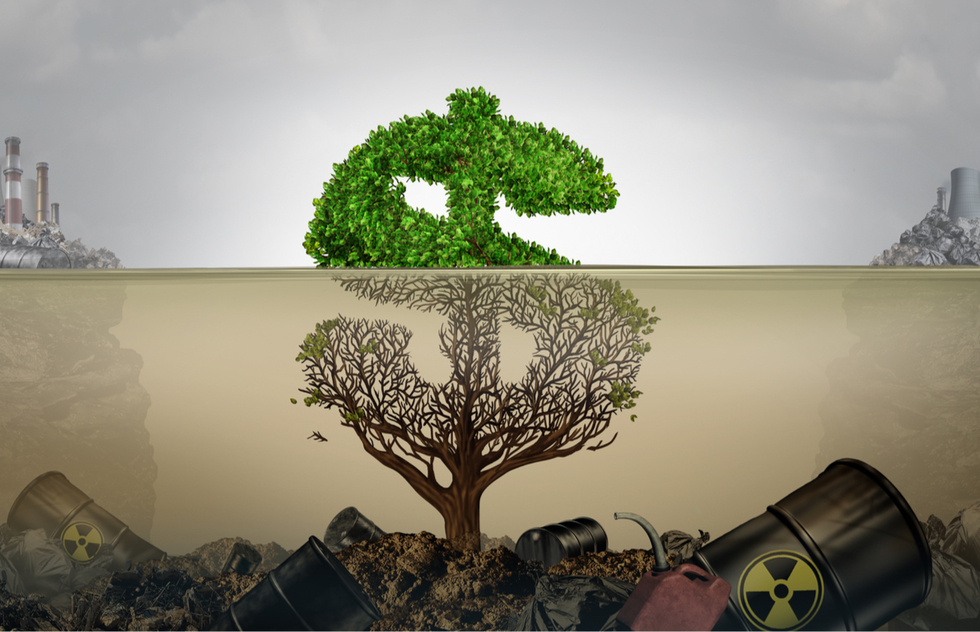At this point, everybody is aware that the world is facing an environmental crisis. Whether an early follower of documentaries warning of impending and irreversible climate change or a recent convert to living more sustainably, many of us are rethinking how we might contribute.
There are plenty of things the everyday homeowner and renter can do to become greener, from repurposing second-hand fridges to avoid landfill waste to switching to less toxic cleaners.
But the truth is, even when people have only the best of intentions, it’s not always a guarantee that the products used, or the companies engaged, are actually as good as they claim to be. This is because of a commonly used tactic known as greenwashing.
When it comes to understanding just what makes something really ‘green,’ how can you spot a bogus claim? Find out how greenwashing works and what to be aware of if you’re committed to living more sustainably.
What is the definition of greenwashing?
Greenwashing is the eco equivalent of whitewashing, a term used to describe the omission of unpleasant or uncomfortable facts. To whitewash is to give someone only the good news, or part of a story intended to create a positive bias. Greenwashing does the exact same, but in terms of overselling the eco benefits of something.
Sometimes referred to as a green sheen, the greenwashing meaning as we know it today originated in the 1980s, coined by environmentalist Jay Westerveld. However, the concept of greenwashing dates back to the 1960s, when nuclear energy first became a major concern.
As people protested the growing nuclear energy movement, power divisions like Westinghouse begin releasing ads and reports proclaiming the cleanliness and safety of using nuclear power and power plants.
Examples of greenwashing
Greenwashing is prevalent across all sorts of industries, but it’s particularly common amongst the fashion and in beauty sectors. When you think about these industries, there are so many brands and products that use buzzwords and phrases like ‘good for the world’ and ‘clean’ but there’s often little knowledge shared around where the majority of products are made, under what circumstances and the overall impact.
For example, when you’ve been won over by a label claiming something is fully recyclable or natural, have you ever considered what that actually means? Could the company be sure that the conditions of the workers was acceptable? Does the factory operate in environmentally sound settings? Does the fabric itself take up a lot of resource being made? All of this plus workers’ wages, living conditions, the water used, waste created, deforestation, the journey of the clothing from source to store are factors needed to really understand where a claim of being green is legitimate.
Can you spot greenwashing?
Look out for these greenwashing tactics used in marketing:
- A gimmick product: for example, a single vegan product in a cosmetics line that is known to test on animals.
- Jargon: usually placed on products to overload you to not ask further questions, this is the sort of information that only a scientist could check or understand.
- No proof: if a bold claim is made — ‘We’re the greenest company around’, ‘This is better for the world’ — but there’s little explanation as to how or why.
Tips for avoiding greenwashing
If you want to make sure that any steps you’re taking are actually making a difference, here’s what you can do to avoid being duped by greenwashing products and companies.
Ask questions
If you’re unsure about something, email a customer service contact or message their social media accounts. If a company is proud of their claims, they should be able to back it up.
Swat up on different certifications
If you know what claims are legitimate, you’ll be able to shop around more easily. Labels that are recognised globally include:
Judge the book by the cover
If a ‘green’ product is sold in packaging that includes lots of plastic, they’re basically telling on themselves. Products and brands that really care will understand that recyclable and minimal packaging will have the least harmful impact.
Our blog is loaded with more related articles

Environmental sustainability
Eco-friendly detergents good for you and the planet
We've gathered the eco products you need to introduce to your weekly wash day.
Read more

Environmental sustainability
How to make natural cleaning products at home
Want to waste less, spend less and help the planet? Making your own natural cleaning products is a great start. It’s not...
Read more

Inside Domestic & General
Who are the Reuse Network?
As a proud friend of Reuse, we know our customers might have more questions about the benefits of donating an old household ite...
Read more
